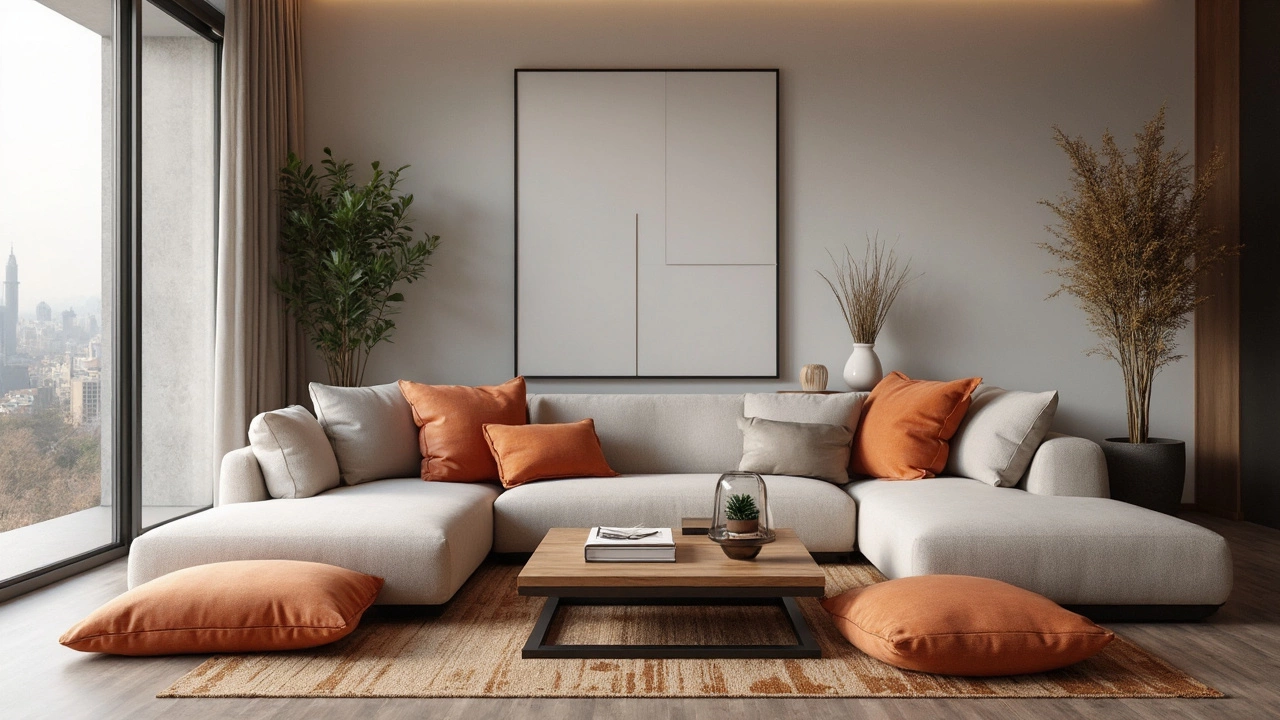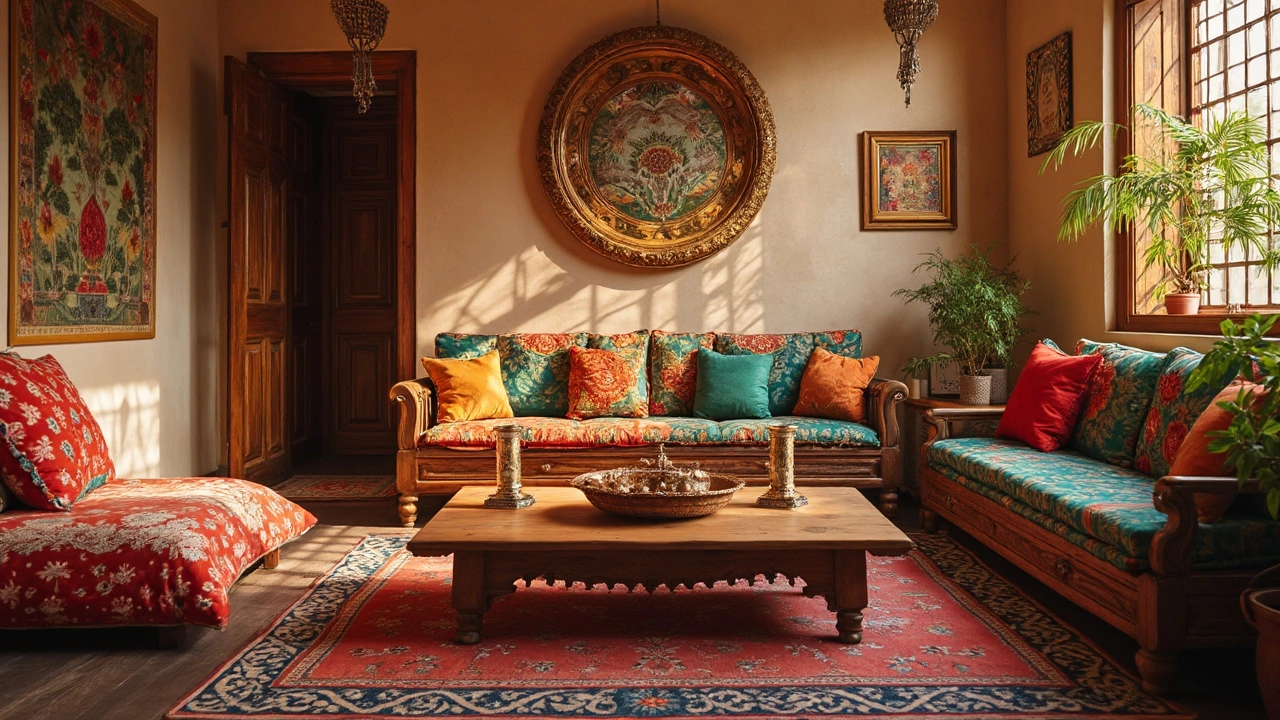Placing a coffee table might seem straightforward, but there's more to it than just dropping it in front of your couch. The right placement can change the room's vibes, making it both beautiful and functional. Ever tripped over your coffee table while reaching for the remote? You're not alone. So, let's figure out the sweet spot for your coffee table!
Start by considering the room's dynamics. How do people move around the space? You don't want your coffee table to be an obstacle course. Ensure there's enough space for people to pass by without bumping into it. A good rule of thumb is to leave about 14 to 18 inches between the coffee table and your sofa—just enough room for leg comfort and easy reach.
- Understanding Room Dynamics
- Balancing Style and Functionality
- Avoiding Common Mistakes
- Practical Tips for Every Space
Understanding Room Dynamics
When setting up your living space, it’s crucial to understand the flow of the room. The placement of a coffee table isn’t just about what's visually appealing; it’s about practicality too.
Think about how you and your family use the room daily. Do your kids need extra space for playtime, or is the area primarily for entertaining guests? The answers to these questions can guide your furniture decisions.
Consider Traffic Flow
A room with clear paths is more comfortable to live in. Ensure that there’s enough space around the coffee table for people to walk, especially if the table is placed near a focal passageway. Ideally, maintain at least 30 inches for major walkways and around 18 inches between the table and the sofa for leg space.
Account for the Unusual
Not all rooms are the same. Odd shapes and sizes might need a little extra thought. Use some painter's tape on the floor to visualize how the space will work before moving in a heavy table. This small hack can save you loads of time and effort!
Measure the Space
To avoid any awkward placements, make sure to measure before you commit. The rule of thumb is the height of the coffee table should be the same as the cushions on your sofa or 4-6 inches lower. As for length, it’s usually ⅔ the length of your sofa for that balanced look.
| Space Requirement | Minimum Distance |
|---|---|
| Between sofa and table | 14-18 inches |
| Main walkway | 30 inches |
By paying attention to the dynamics and layout of your room, you'll not only enhance its look but also make it more user-friendly. Whether that’s hosting a party or simply vegging out for a movie night, having a strategically placed coffee table makes all the difference.
Balancing Style and Functionality
When deciding on the best placement for your coffee table, balancing style and function is key. It's not just about what looks good—though that's important too—but how the table fits into your daily life. Your coffee table placement should enhance both the aesthetic and usability of your living space.
Why Style Matters
First off, let's talk about size and shape. A coffee table that's too large can overpower the room, while one that's too small might get lost among your other furniture. A round table might soften a room full of straight lines and edges, while a rectangular one can anchor more fluid, eclectic setups. Think about the theme of your living space, whether it's minimalist, rustic, or boho-chic, and choose a table that complements that theme.
Function Takes the Spotlight
As much as we love style, the table also has to serve its purpose. If you're the type who loves hosting game nights or having friends over for a drink, you'll want a sturdy table with ample surface area. Maybe you need storage space for magazines or remotes? Consider tables with built-in drawers or open shelves underneath.
- Ensure there's a clear space all around the table for people to move comfortably. A 360-degree flow around the table minimizes awkward shuffling around corners.
- Make sure the height of the table aligns well with the sofas or chairs it's paired with. Aim for a table that's within two inches of your sofa's height, either higher or lower, for an integrated look.
Style Meets Function
Want to combine design and practicality? Opt for a mix of materials. A glass table can visually open up a room while providing functionality, and a wooden table brings warmth and heft while being super useful. A metal frame with a marble top? Instantly elevates your space while being really serviceable.
When you strike that right balance between style and functionality, your coffee table can boost your living space's good vibes while being a real workhorse. Just keep in mind the space, how you use it, and most importantly, what makes you feel at home.

Avoiding Common Mistakes
A coffee table might be a staple in the living room, but a few common mistakes can turn it into a nuisance rather than a centerpiece. Let’s dig into the pitfalls to steer clear of.
Don't Skimp on Space
One big mistake people make is pushing the coffee table up against the sofa or placing it too far out of reach. Aim for that sweet 14 to 18 inches of space between the coffee table and the seating. This gap ensures accessibility without cramping anyone's style.
Avoid Clashing Styles
Another blunder is mismatched furniture styles. If your coffee table looks like it belongs to another era compared to the rest of your decor, it can throw off the entire vibe. Make sure it complements your living room's aesthetic, whether it's rustic, modern, or eclectic.
Watch Those Sharp Edges
Mind the edges! If you’ve got kids or are just a real-life clutz, a table with sharp corners isn’t your friend. Opt for rounded edges to make the space safer for everyone, including those beloved pets.
Don't Overcrowd
Clutter is the enemy of any good room layout. Keep that coffee table clear of too many magazines, remotes, or knick-knacks. Creative storage solutions like trays or a table with built-in storage can help you keep things tidy.
And here's something cool: a survey conducted in 2023 found that 60% of people wished they had considered table height more. So, be sure your table isn't too tall or too short, which can make it awkward to use.
Neglecting Functionality
Consider what you actually use the coffee table for. Do you need it for games, books, or simply as a decorative element? Prioritize features based on your lifestyle. For instance, if you're a book lover, you might benefit from a coffee table with a lower shelf.
Avoid these common pitfalls, and your coffee table will enhance your living space rather than complicate it.
Practical Tips for Every Space
Whether you're in a spacious living room or a cozy apartment, getting the right coffee table placement is key. Let's dive into some practical tips that cater to different spaces and ensure your coffee table looks and functions like a charm.
For Small Spaces
In small areas, choose a compact coffee table. Round tables work great because they can tuck neatly into corners and offer more room to move around.
- Use a coffee table with storage to keep clutter away. Think drawers or shelves beneath the table.
- Consider a clear glass table—it creates the illusion of more space.
For Large Living Rooms
Big spaces can handle more substantial coffee tables. Opt for bold designs that become a focal point.
- Place the coffee table centrally for gatherings—everyone should have easy access.
- If the room feels too sparse, add a couple of smaller side tables for additional surfaces.
Aligning with Seating
Your furniture arrangement is just as important. Here are a few steps:
- Measure your seating area and choose a table that fills about two-thirds of it. This keeps proportions in check.
- Maintain uniform distance: move the coffee table closer to the seating if there's too much gap.
Material Matters
The material of your coffee table can also contribute to the overall style. Remember:
- Wooden tables add warmth and are classic choices.
- For a modern look, go for metal or stone.
Interior design tips are not just for looks; they make a big difference in how comfortable your living area feels. So, these tips can transform your space, whether you’re entertaining friends or enjoying a solo movie night.

